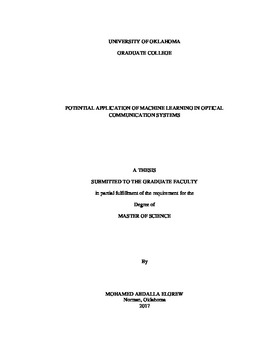| dc.description.abstract | In this work, we will examine practically encoding information in the state of polarization using M- POLSK. We employ polarization-shift keying (POLSK) to generate an expected pattern of changing states of polarization (SOPs). We generate a random sequence of voltages that represents a random sequence of bits, then we encode this sequence in the state of polarization. we apply the sequence of voltages -using the DAQ assistant- to the polarization modulator to embed this random sequence of bits in the state of polarization. At the far end, we collect the Stokes parameters data of the encoded file using polarization detector. Then, we reduce the dimensions of the collected data to one dimension using a Matlab code. In the final stage of the data recovery, we process the data and discriminate bits using both averaging and machine learning techniques to recover the random sequence that has been sent. Finally, by comparing the sent data set with the recovered data set. We can calculate the efficiency of data recovery process or the bit error rate of the received file. These POLSK symbols will be encoded in a fully polarized light. We will encode binary POLSK, 4-POLSK and 8-POLSK symbols in the SOPs of light in different runs. Also, we will propose the use of averaging to process the Stokes parameters that result from encoding binary POLSK and machine learning techniques to analyze the process of the Stokes parameters that belong to 4-POLSK and 8-POLSK. The state of polarization is presented by five variables. Three of them are the Stokes parameters S1, S2, and S3. The other two are the angles 2γ, 2β. The final dimension is going to be the horizontal angle in the Poincare Sphere representation. Then, we are going to predict the class (symbol) that belongs to each part of processed data. The length of the data points that represent each symbol is dominated by the sampling rate at the receiver. Symbol prediction will be accomplished using the classification learner’s techniques called K-Nearest Neighbor and Support Vector Machine. Basically, these techniques predict the class of the data based on the model built using guided data (row data and its class). Finally, we match the predicted class with the original symbol file to measure the accuracy of the prediction models. In other words, the number of symbols that has been predicted successfully. | en_US |
